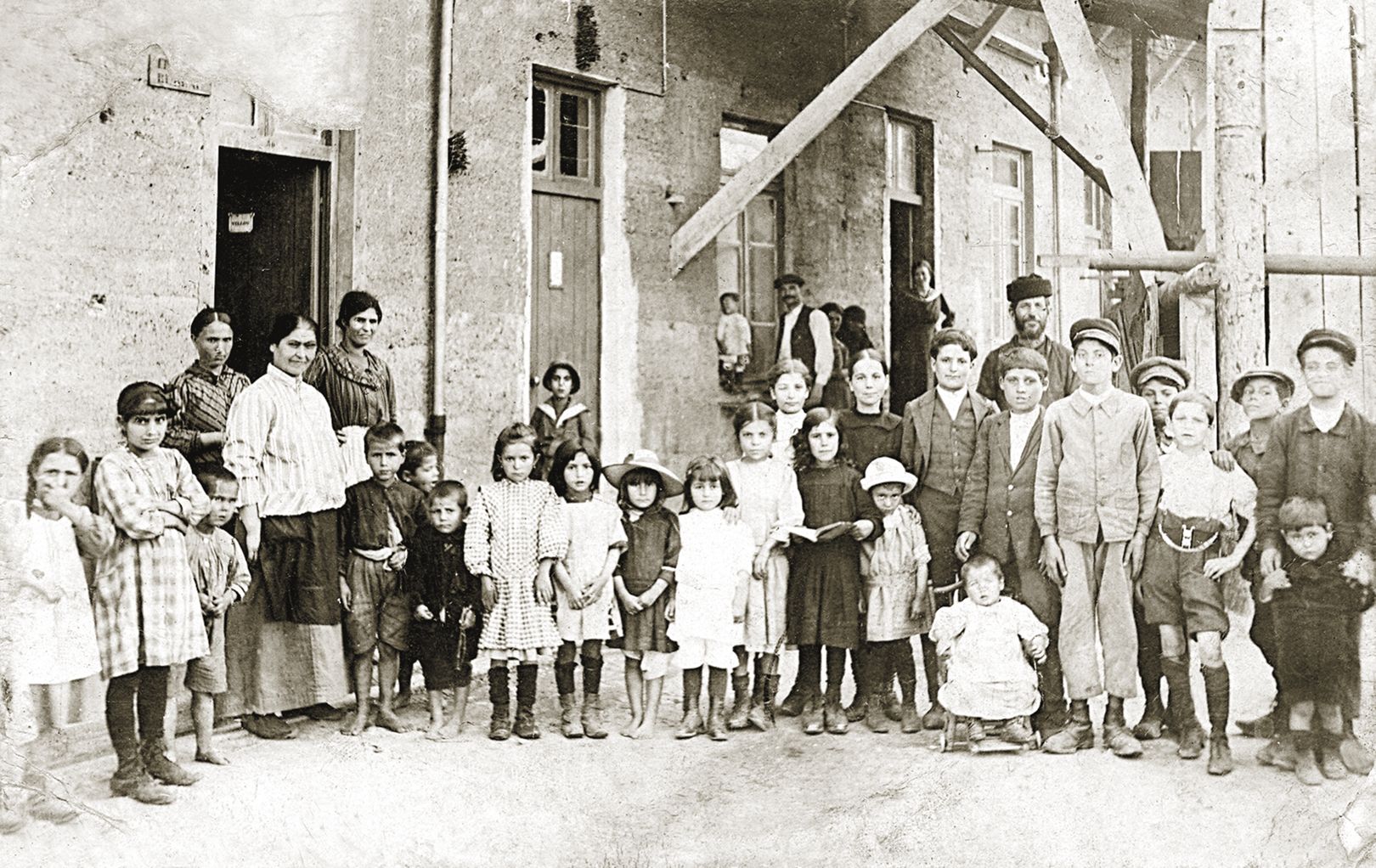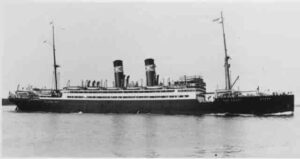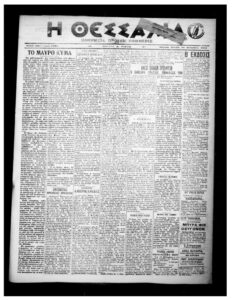Arrival and settlement
City
Migration Period
City Narratives
Category
Full Description
From the beginning of the 1920s, the port of Volos became the point of arrival for thousands of refugees coming from different places of origin and arriving at different time periods. The first refugee wave arrived at the port in 1921 consisting of 5,300 refugees from Yalova, Nikomideia (Izmit) and the greater area of Propontis. Of these, 1,828 refugees settled in Volos.
The second and largest refugee wave started arriving at the port of Volos at midnight on Monday, September 19, 1922. It was a fleet of passenger ships carrying approximately 12,000 refugees from Smyrna and the surrounding areas after the retreat of the Greek army and the destruction of the city. Among the ships is the ocean liner Megali Ellas, packed with 8,000 refugees (item 1, photograph). The day thousands of starving, desperate refugees disembarked on the beach of Volos is documented in a devastating article by T. Oikonomakis in the newspaper Thessalia entitled ‘The Dark Wave’, a text that would later become a point of reference for Asia Minor refugees (item 2, excerpt). According to the narrative of Evangelini Paraskeva-Lefaki, a first generation refugee born in Englezonisi in 1910, some of the refugees who arrived in Volos during this second wave had crossed the Aegean Sea on their own boats. Evangelini remembers experiencing the destruction of Smyrna as a child, travelling on her father’s boat, and struggling to find a place to stay in Volos (items 3a-3b, interview extract).
The third refugee wave arrived at the port of Volos after the signing of the Lausanne Treaty, on September 25 and 27, 1924, and consisted of ‘exchangeable’ refugees from Mersin and Kaisareia (Kayseri) in Cappadocia and Sampsounta (Samsun) in Pontus. At the same time, Muslims who had been residing in various areas of Greece were also being expelled and sent to Turkey. Among them were the Roma grandparents of Paschalis Karakostas, born in Volos in 1939, who were forced to resettle in Turkey as ‘exchangeable Muslims’ in 1924. Karakostas recounts the story of his grandparents and how they found a way to return to Greece and convert to Christianity (items 4a-4b, interview extract).
Most refugees who came to Greece, especially those escaping the Asia Minor Catastrophe, brought nothing with them except their memories, their wounds, and their songs. Apostolia Proia, born in Volos in 1930, sings the song ‘Alatsata’ which she was taught by her mother.
Alatsata (in Turkish Alaçatı, a seaside village near Smyrna) is mentioned in two very popular songs: the first and the oldest is ‘Alatsatiani’, a karsilama, which was recorded shortly before 1930 and is known for its Turkish refrain ‘haydi gidelim’ [let’s go]. The second one, ‘There’s a mountain in Alatsata’, is clearly newer and more refined as it refers to the Asia Minor Catastrophe and appeared at the end of the 1980s. The version sung by Apostolia Proia sounds like neither and is probably a mix of three different songs, creating a result that sounds different from the restored songs that were popularised and immortalised through mass media. Instead, Apostolia’s song is personal memory, distorted by discontinuities and faded by time. Apostolia’s version of the song might be flawed, but it’s exactly these flaws that give the song interest and value (items 5a-5b, interview extract).
Bibliography
Thessalia newspaper, issues dated June 17 and 18, 1921; September 20, 1922; September 24 and 27, 1924.
Refugee memories: the Asia Minor Refugees in Volos, photo album, Archive, Museum and Library Directorate, Municipality of Volos, 2021.
Item 1: https://volosmagnisia.wordpress.com/2014/09/18 and https://rucore.libraries.rutgers.edu/rutgers-lib/10786/, accessed on 11/1/2022.
Item 2: Thessalia newspaper, September 20, 1922.
Items 3a-3b: Interview of Evangelini Paraskeva-Lefaki conducted by Anastasia Kontaxi, 1990, Audiovisual Archive of Testimonies, Department of History, Archaeology and Social Anthropology, University of Thessaly.
Items 4a-4b: Interview of Paschalis Karakostas conducted by Panagiotis Karakostas and Riki van Boeschoten, Audiovisual Archive of Testimonies, Department of History, Archaeology and Social Anthropology, University of Thessaly.
Items 5a-5b: Interview of Apostolia Proia-Tsangari conducted by Kostas Nikas and Maria Chatzinikolaou, 8/2/19, Audiovisual Archive of Testimonies, Department of History, Archaeology and Social Anthropology, University of Thessaly.


